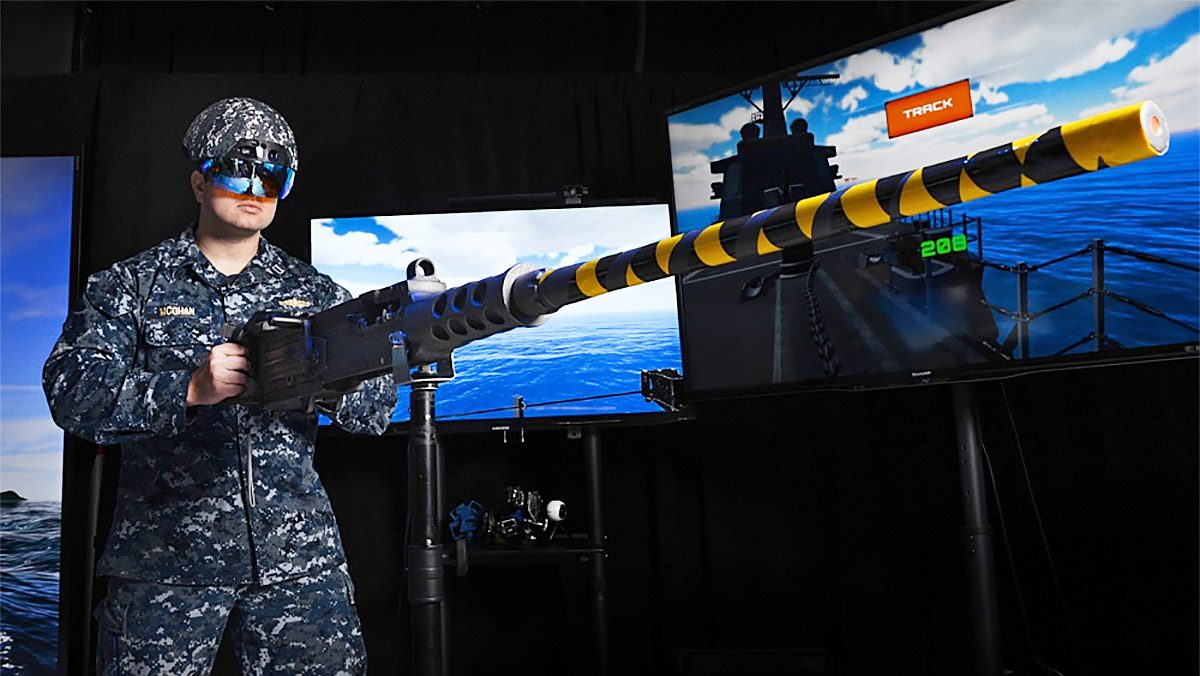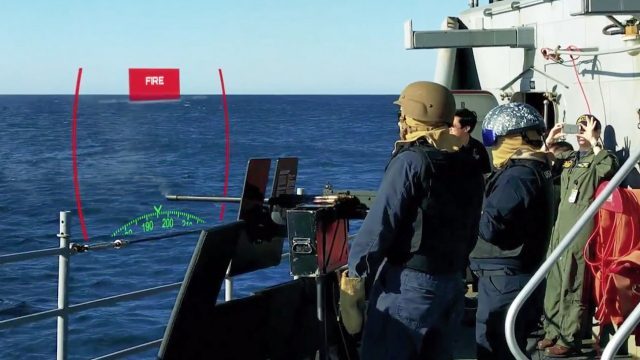The GunnAR system uses augmented reality helmets to visually relay targeting and firing commands to gunners aboard Navy vessels, replacing decades-old methods of giving audible commands by radio which can be hard to hear over the sounds of firing machine guns and through required ear protection.
VR and AR are poised to change the face of consumer entertainment, but both technologies have been studied and used in various military capacities for decades. As the consumer sector drives down the cost of many of the components needed for AR and VR, new opportunities for their use arise.
GunnAR is a system for communicating targeting and firing information to gunners aboard Navy vessels. Developed by the Space and Naval Warfare Systems Center Pacific’s (SSC Pacific) Battlespace Exploitation of Mixed Reality Lab (BEMR), the system employs the Daqri smart helmet which is a self-contained AR headset powered by an Intel processor. Combined with a tablet-controlled app, a ship’s gunnery liaison officer can issue precise commands that are shown visually to the gunner, avoiding any ambiguity that could be introduced due to the difficulty of hearing audible commands in a combat scenario.

GunnAR has been in development since 2016, but the system recently saw its first live-fire test aboard the guided missile cruiser USS Bunker Hill. During the test, summarized in the video heading this article, the gunnery liaison officer was able to see the bearing that each gunner was pointing, command them to point to a new bearing, fire, cease fire, and more. A target in the water was fired upon with a mounted machine gun during the test.
In addition to bringing clarity and control to firing commands, the information can be logged for later analysis to improve performance and decision making.
GunnAR was the brainchild of Lt. Robert McClenning, a Navy training officer whose idea for a unified gunnery system earned him the top prize of $100,000 in prototype funding during the Office of Naval Intelligence’s March 2016 Innovation Jam, reports SSC Pacific’s Patric Petrie. The BEMR Lab went on to prototype the idea, which Lab Director Heidi Buck says is an example of using low cost components and techniques for rapid experimentation.
“By using low-cost, commercial-off-the-shelf (COTS), virtual reality technology to aid in prototyping the concept, and low-cost COTS augmented reality technology to demonstrate the concept, we’ve been able to build this capability very quickly, all the while keeping the Sailors endorsing the idea in the loop,” Buck said.
The BEMR lab is part of the Navy’s latest Science & Technology plan which calls for leveraging advancements in a “rapidly changing landscape of new technologies.” The Lab has been exploring ways to leverage advances in consumer technology for battlefield advantages.
“For the past few decades VR in the military has been used in simulations where training on the real systems was cost prohibitive or even extremely dangerous,” Arne Odland, former Chief Technologist at BEMR, told me last year when I learned about the Lab’s works.
“At these gaming and consumer entertainment costs, we are seeing cost reductions of 100 times at a minimum for the hardware,” said Odland. “The resurgence of [consumer AR and VR] is allowing for this technology to be brought to every soldier and sailor and not just for training.”



